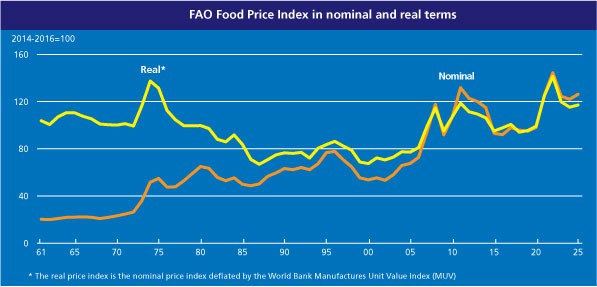Our Terms & Conditions | Our Privacy Policy
Sugar Prices Dip on Weaker Global Demand, FAO Reports
By zainab.joaque@awokonewspapersl.com
Freetown, SIERRA LEONE – Global sugar prices took a notable dip in March 2025, according to the latest data from the Food and Agriculture Organization (FAO), as signs of weakening demand eased fears of a global supply crunch.
The FAO Sugar Price Index fell by 1.4% to 116.9 points compared to February, marking a 12.3% drop from its level a year ago. The organization attributed the decline primarily to subdued global demand, which has helped calm earlier concerns about tight supply conditions.
Adding further downward pressure on prices was much-needed rainfall in southern Brazil—a key sugarcane-growing region—following a prolonged dry spell. However, the relief in the market was not without caveats. The FAO warned that poor crop forecasts in India and lingering doubts about Brazil’s overall sugarcane harvest continue to cast a shadow, preventing a steeper price drop.
The cereal market mirrored sugar’s downward trend. The FAO Cereal Price Index averaged 109.7 points in March, down 2.6% from February and 1.1% lower than in March 2024. Wheat prices softened as weather conditions improved in major Northern Hemisphere producers, although global uncertainty over escalating trade tensions added a layer of complexity.
Contributing to the fall in cereal prices were several key developments: improved maize crop conditions in Brazil due to recent rains, the onset of Argentina’s harvest, and lackluster import demand from China. Meanwhile, sorghum prices fell, barley saw slight gains, and rice declined by 1.7% amid weak global demand and strong export availability.
Unlike sugar and cereals, dairy prices held firm. The FAO Dairy Price Index remained flat at 148.7 points in March—unchanged from February but nearly 20% higher year-on-year.
Beneath this stability was a push-and-pull dynamic: international cheese prices slipped by 1.8%, breaking a nine-month streak of gains, while butter and milk powder prices climbed. Butter saw a 3.9% monthly rise on the back of robust retail sales and international demand, despite seasonal production slowdowns in Oceania and Europe. Skim milk powder also rose for the second consecutive month due to tightening global supply and strong demand, while whole milk powder edged upward amid mixed market conditions in Europe and Oceania.
The FAO’s latest figures underscore the fragile state of global food markets, where prices are being shaped by a complex mix of weather events, shifting trade policies, and fluctuating demand. While falling sugar and cereal prices may offer temporary relief to import-dependent nations, underlying supply risks and market uncertainties remain key factors to watch in the months ahead. ZIJ/22/4/2025
Images are for reference only.Images and contents gathered automatic from google or 3rd party sources.All rights on the images and contents are with their legal original owners.



Comments are closed.